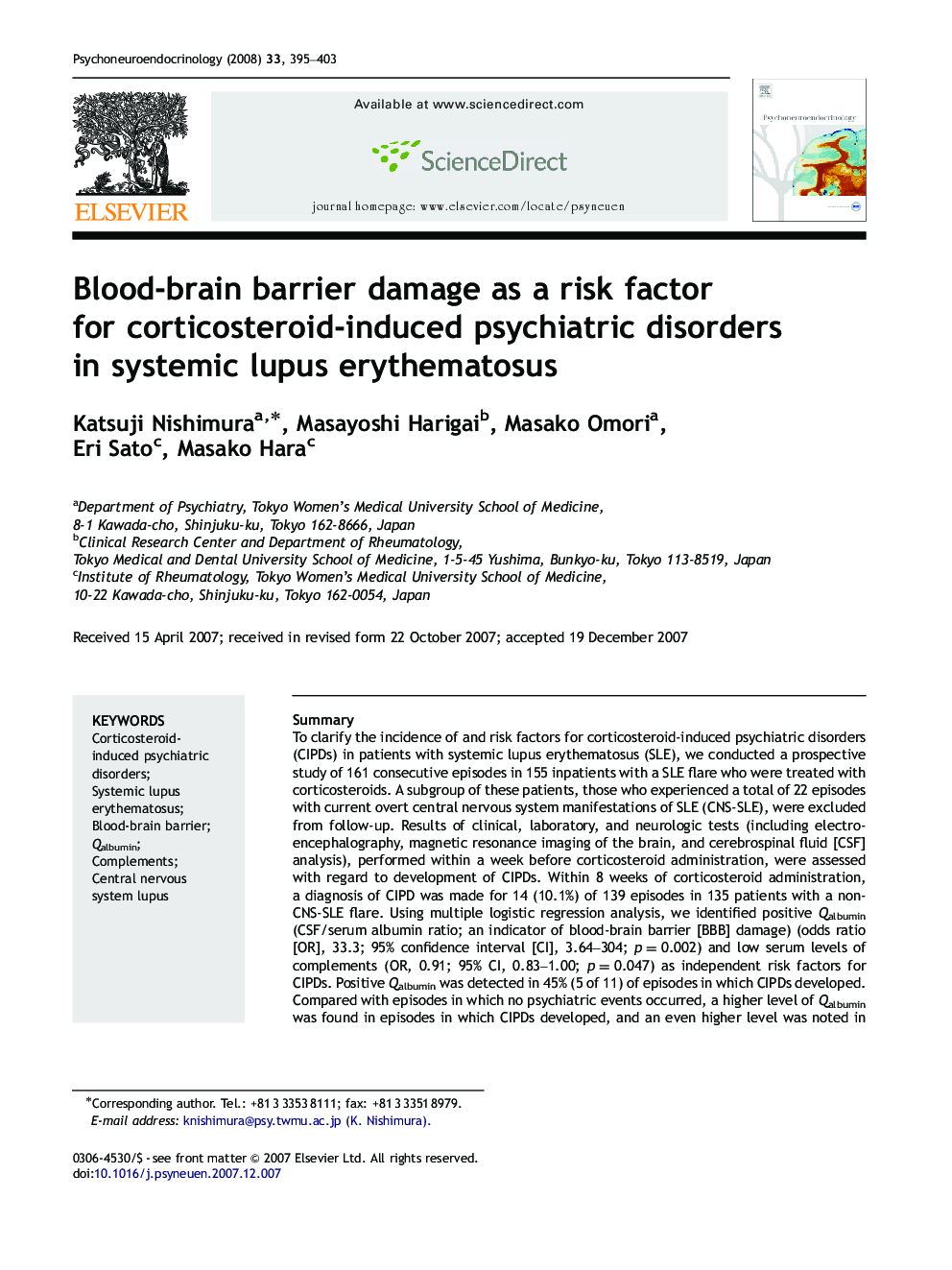| کد مقاله | کد نشریه | سال انتشار | مقاله انگلیسی | نسخه تمام متن |
|---|---|---|---|---|
| 336834 | 547223 | 2008 | 9 صفحه PDF | دانلود رایگان |

SummaryTo clarify the incidence of and risk factors for corticosteroid-induced psychiatric disorders (CIPDs) in patients with systemic lupus erythematosus (SLE), we conducted a prospective study of 161 consecutive episodes in 155 inpatients with a SLE flare who were treated with corticosteroids. A subgroup of these patients, those who experienced a total of 22 episodes with current overt central nervous system manifestations of SLE (CNS-SLE), were excluded from follow-up. Results of clinical, laboratory, and neurologic tests (including electroencephalography, magnetic resonance imaging of the brain, and cerebrospinal fluid [CSF] analysis), performed within a week before corticosteroid administration, were assessed with regard to development of CIPDs. Within 8 weeks of corticosteroid administration, a diagnosis of CIPD was made for 14 (10.1%) of 139 episodes in 135 patients with a non-CNS-SLE flare. Using multiple logistic regression analysis, we identified positive Qalbumin (CSF/serum albumin ratio; an indicator of blood-brain barrier [BBB] damage) (odds ratio [OR], 33.3; 95% confidence interval [CI], 3.64–304; p=0.002) and low serum levels of complements (OR, 0.91; 95% CI, 0.83–1.00; p=0.047) as independent risk factors for CIPDs. Positive Qalbumin was detected in 45% (5 of 11) of episodes in which CIPDs developed. Compared with episodes in which no psychiatric events occurred, a higher level of Qalbumin was found in episodes in which CIPDs developed, and an even higher level was noted in episodes with active CNS-SLE (Jonckheere-Terpstra test, p<0.001). Although no causal links have been proven, the results from the present study raise the possibility that BBB damage may be associated with SLE- and corticosteroid-induced behavioral changes.
Journal: Psychoneuroendocrinology - Volume 33, Issue 3, April 2008, Pages 395–403